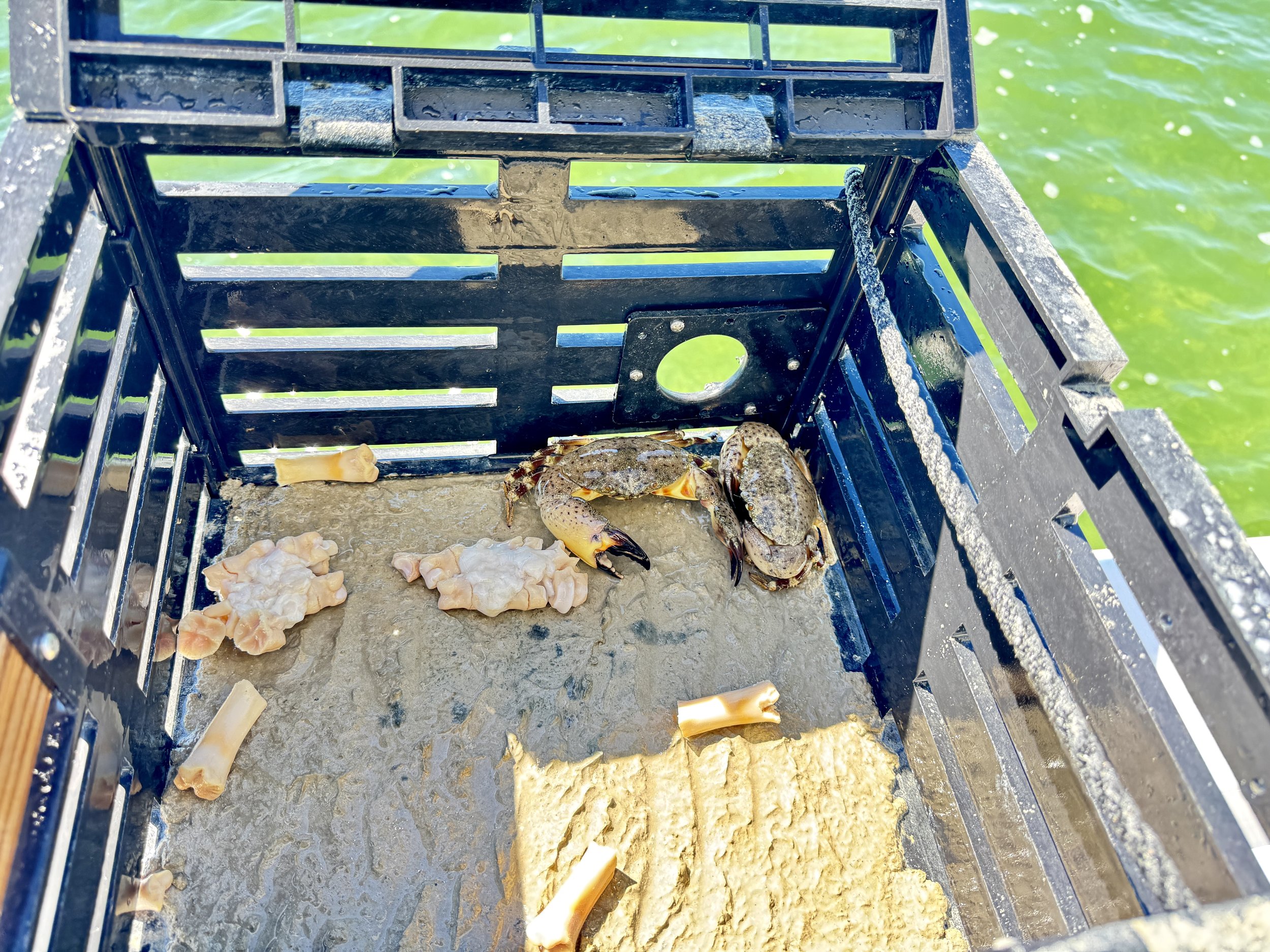Yummy Appetizer
Stone Crab Legs
One of the things we love about living in the keys is access to delicious seafood. We spend a good portion of our days on the turquoise waters which are teeming with diverse marine life. Mostly with fishing rods in hand, we are searching for an abundance of fish such as mutton snapper, yellowtail, and tuna. We have also invested in some crab traps, in the hopes that many stone crabs will find their way into them.
Stone Crabs
Stone crabs are found primarily along the Gulf of Mexico and the southeastern coast of the United States, particularly in Florida. These crabs are easily recognizable by their dark, rough carapace and distinctive orange-red claws. The claws grow to a large disproportional size to the crab, reminding one of Popeye forearms. Unlike many other crabs, stone crabs are sustainably harvested by removing only one or both of their claws, which regenerate over time, allowing the crab to live. This regeneration can take anywhere from several months to almost a year depending on the size and age of the crab, with younger crabs regenerating faster due to molting more often. The meat from stone crab claws has a delicate flavor and is often served cold.
harvested claws
As a Florida resident with a fishing license, you are allowed five crab traps. Since this applies to each person, Steve and I together have 10 traps. These traps are cubes made from heavy-duty plastic, designed to be both strong and lightweight. The traps have openings large enough to allow crabs to enter but small enough to prevent them from escaping once inside. Bait is placed inside the trap to attract the crabs. We typically use pig’s feet or fish carcasses from our previous catch. The traps are dropped onto the ocean floor in somewhat shallow water, with a rope and buoy attached. As a recreational fisherman, our buoys are required to have a large R on them. We chose to paint our buoys blue and white for Penn State.
crab traps
trap baited with pigs’ feet
After several days or a week, we harvest our traps in hopes of finding some crabs. This involves Steve steering the boat close to one of our buoys and me snagging the rope with the boat gaff hook. Steve then hauls the trap onto the boat for us to see what we caught. We use tongs to pull the crabs from the trap, as those claws grow big and strong. Using a metal measuring device, we check to see if any claws are of legal size. One of the coolest things about these crabs is how you harvest claws by sticking a knife into one of the claw leg joints and presto, the crab releases his claw. It is so amazing to see. The crab is then released back into the water unharmed. While it is legal to harvest both claws, we tend to only take one claw, so the crab isn’t completely defenseless when released. Based on the number of one clawed crabs we catch, it appears most people hold to this philosophy.
Caught some crabs
getting crab to release the claw
The claws are kept in salt water until we get back to shore. Once home, we steam them for about 5 minutes making a yummy appetizer for dinner. The shells of the stone crab are very hard and require a good pit of whacking to crack, but the resulting meat is so worth the effort.











